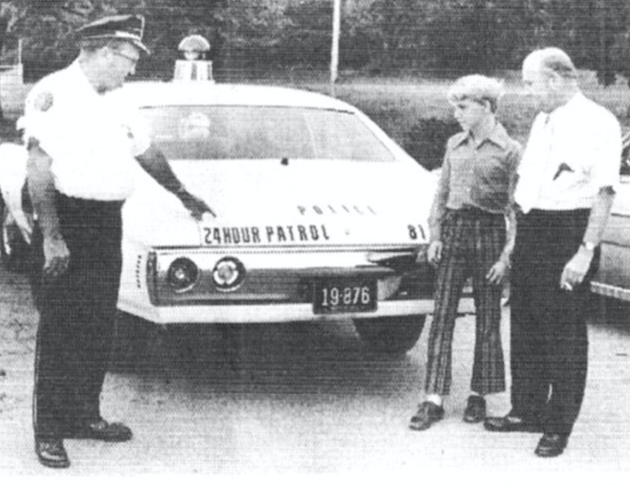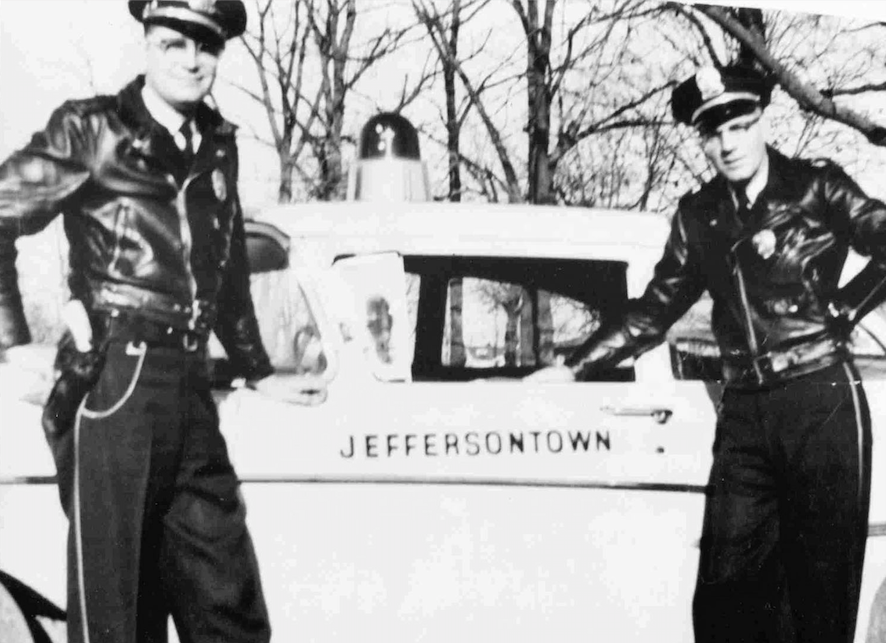Photography Provided
Jeffersontown has an unparalleled police department that is highly respected nationwide, and its history dates back to the late 1700s. In 1799 the Jeffersontown board of trustees appointed a surveyor of Main and Market streets (now known as Watterson Trail and Taylorsville Road). The duties of this official included not only deterring crime, but inspecting the town’s streets, alleys and buildings for cleanliness and signs of deterioration. In 1815 the position became known as overseer of streets.
The first semblance of an actual police force came about through an order of the Jefferson County court on March 10, 1820, when George A. Frederick was appointed captain, and Philip Zillhart, Jr., Henry Herbold and Daniel Risinger were appointed assistant patrollers for Jeffersontown. On July 26, 1830, the town trustees appointed four men – John McPherson, Andrew F. Shafar, Hezekiah Read, and John Muster – as night watchmen. Their duties included patrolling the streets and alleys at night, and to raise an alarm in case of fire. The watch was divided into two shifts – 9 p.m. until 12:30 a.m., and 12:30 a.m. until 4 a.m.

By the early 1900s, Jeffersontown had a town marshal, elected by the board of trustees and given authority to name any assistants desired. The marshal had to reside within Jeffersontown’s city limits, and appeared to be answerable not only to local government, but Jefferson County squires and judges as well. In 1907, M.W. Agee had to resign as town marshal because he lived outside Jeffersontown, and John Hornbeck was elected to take his place.
Frank Tyler, who had served as a county patrolman, was appointed town marshal in February of 1910. Articles from the time period indicate that town marshals and county patrolmen worked hand in hand on many cases. Tyler had to move into Jeffersontown before he could be sworn in and begin his duties as town marshal. In April of 1910, the trustees passed a resolution authorizing payment of $1 per month toward the salary of Jeffersontown’s town marshal.
The town marshal’s duties covered everything from making sure pig pens were in sanitary condition to arresting unruly citizens. Primarily, the marshals policed the town’s streets, enforcing ordinances that had been enacted by Jeffersontown’s trustees. Most of these rules were related to the upkeep and safety of the town. The marshals did have to deal with crimes such as burglaries and murders, and their duties were not without risk. In 1932 former marshal Willis Simpson was sworn in while R.C. Smith, town marshal and chairman of the town council, recovered from a severe beating received at the hands of a man he attempted to arrest.
By 1946 the town marshal was earning $50 per month, and Jeffersontown also had a police judge named James Bowles who became the town’s first mayor in 1953. The primary duty of the police judge was to assess traffic fines in Jeffersontown. The deputy town marshal at that time, Joseph A. Jones, was also the maintenance superintendent of Jeffersontown’s water and sewerage commission. Before he was appointed, the town council had to come to an understanding with Jones’s employers that his work as deputy would not interfere with his work at the commission. Obviously, Jeffersontown’s city leaders wore different hats at the time, for little money.
On January 7, 1955, the Jeffersonian newspaper noted that the town council had “approved appointment of Police Chief M.A. Storch for another one-year term.” This would indicate a change in title from town marshal to police chief sometime in the early 1950s. That same day, Police Judge W.D. Menefee issued his annual report, stating that there were 101 cases handled in 1954 with a total of $1,500 in assessed fines, primarily from traffic violations.
In January of 1956 Police Chief Chester Robinson resigned after just a few months on the job. The council intended to hire Ernest Shryock, the police chief of Taylorsville and a former captain of the Jefferson County Police Department, at a salary of $4,500 per year. However, the council had to look for someone else when Shryock opted to stay with Taylorsville’s department, since that department offered to not only raise his salary, but also equip the city with a police car.
Jeffersontown finally got its own police car and a two-way radio in 1957, after Gene Teague was hired as chief of police at a salary of $350 per month. M.A. Storch, Robert Genho and Sergeant Gilbert Hubbuch were all part-time officers.
Teague resigned in September of 1958 and was replaced by Thomas Bridwell, who had been a county patrolman for 18 years. By ordinance, Bridwell was appointed for a period of 14 months. He received $300 per month, had to purchase his own uniforms, and received one week of paid vacation after completion of one year’s service.
By 1965 Herb Meyer was serving as police chief, with Joe Hash, Robert L. Ogborn and Harvey Gaddie rotating full-time shifts as patrolmen from 3 p.m. to 11 p.m. and 11 p.m. to 7 a.m. The Jeffersontown Police Department’s brown uniforms were styled after those worn by Kentucky state troopers. The department changed to blue and gray uniforms in 1966, however, because the Kentucky Sheriffs’ Association adopted Army pinks and Jeffersontown leaders wanted to be different.
In 1968 the Jeffersontown Police Department acquired a new portable car radio for $1,055. At the time the force consisted of five officers, and it had two wagons on the road plus one old car. By 1972, the 10-man department had five patrol cars on duty 24 hours per day. Later that year, a bid of $23,731.86 was accepted from Jim Booher Chevrolet to provide six take-home cars. With lights and radios, the total price of all the new cars combined was $28,000. In 1973 the base salary for a patrolman was $648 per month, and the department’s headquarters was in city hall.
In 1975 Reverend Tom Dillard began acting as Jeffersontown Police Department chaplain. A year later, the police department began renovating the old Sunshine Lodge on Bluebird Lane as its new headquarters, and F.O.P. Lodge #26 was established. The police force grew by leaps and bounds, and by 1990 Mayor Daniel Ruckriegel was negotiating with the owners of Skate World to purchase the building at 10410 Taylorsville Road and renovate it into a new police department.
The rest, as they say, is history – but far too much to be included in this article. Jeffersontown is very fortunate to have such an exceptional police force, and we are grateful for the 200-plus years of service and protection the force has continually provided.






Comments 1